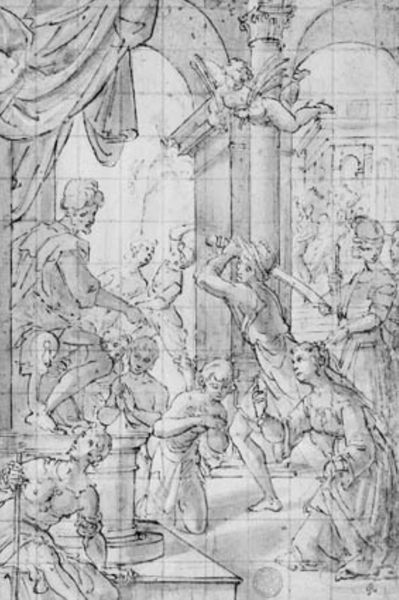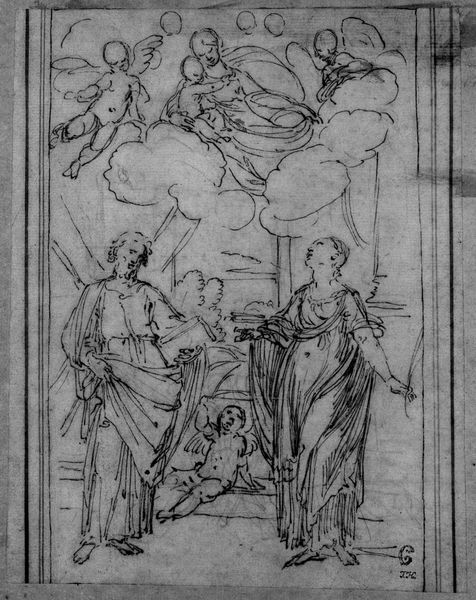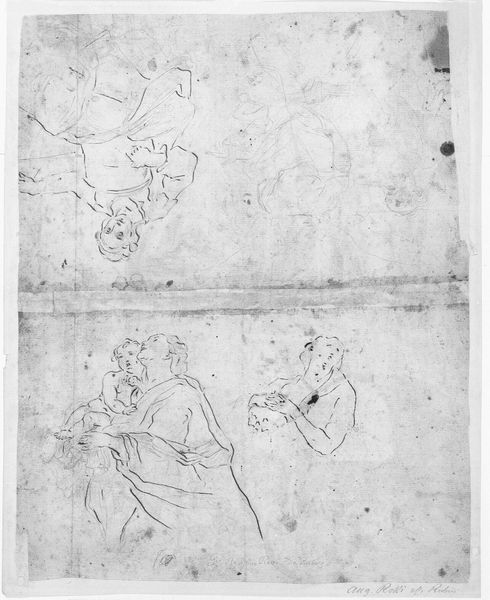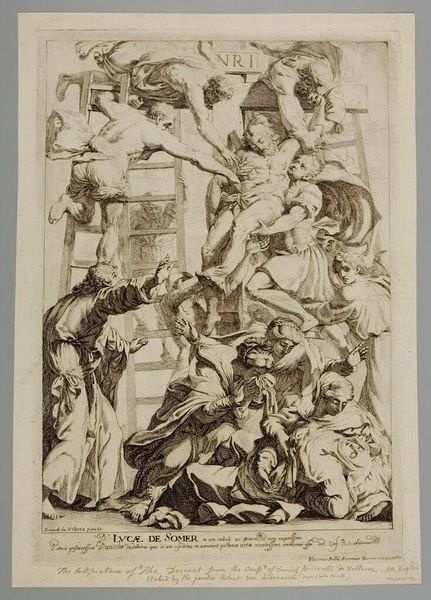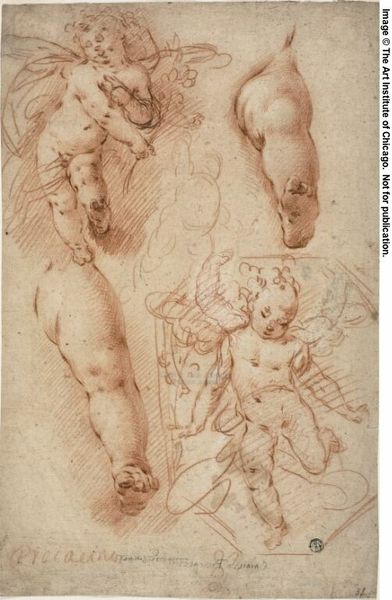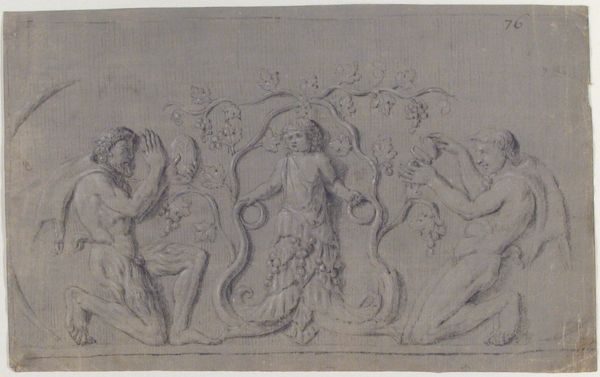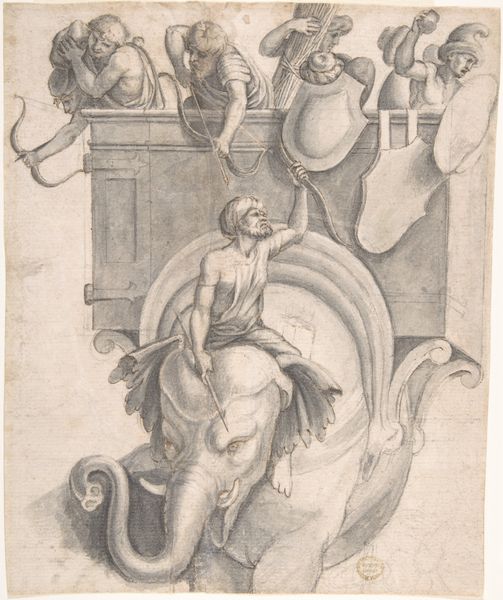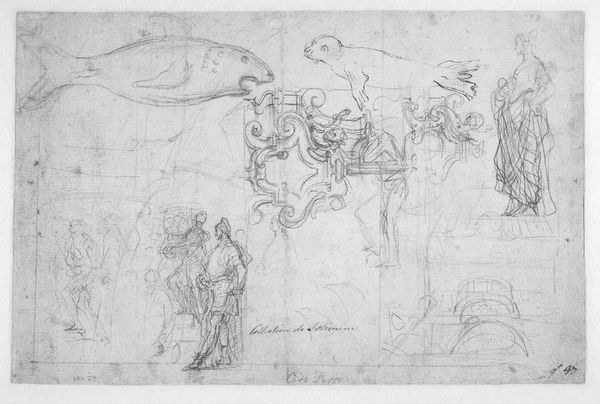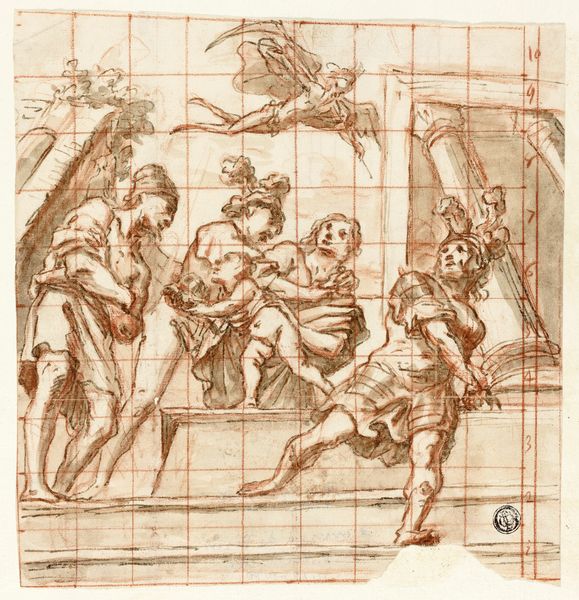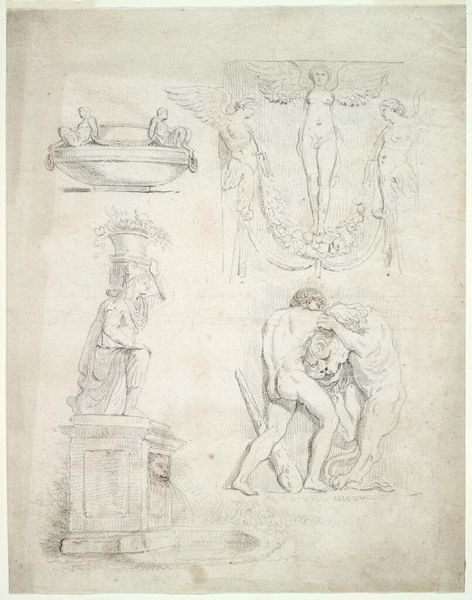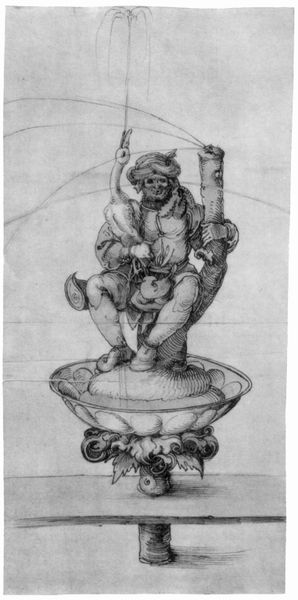
drawing, ink, pen
#
portrait
#
drawing
#
allegory
#
baroque
#
pen sketch
#
pencil sketch
#
figuration
#
ink
#
pen
#
history-painting
Dimensions: 244 mm (height) x 179 mm (width) (bladmaal)
Curator: "Study for a Tomb," dating sometime between 1625 and 1699, it's an anonymous ink and pen drawing. What strikes you most about it? Editor: It feels very grand, despite being just a sketch. The figures seem important, the man is wearing armour, another sits in state upon an ornate throne; I feel there must be some sort of allegory at work here. How might we unpack the social commentary embedded in this drawing? Curator: Exactly! Notice how the armored figure, seemingly ready for battle, stands apart from the seated figure and cupid that might represent power or divine love, perhaps a figure embodying war and honour adjacent to power and privilege. Does the separation imply a commentary on the relationship between military prowess and governance? Is honour being sidelined? Editor: That's a fascinating angle, looking at it now the warrior figure feels almost…isolated. So, are you suggesting this drawing critiques the societal structures of its time, the role of leadership, perhaps, or the very concept of legacy itself? Curator: Precisely! And consider the ‘tomb’ aspect. Tombs commemorate, but also, in a way, mask. What uncomfortable truths might be buried beneath the grandeur and tradition it evokes? The piece seems to grapple with the burdens of power and mortality, hinting at a complex negotiation between outward display and inner contemplation. This historical context opens dialogues about enduring societal inequalities and our own roles within these systems. Editor: That adds a whole new layer. I hadn't considered the aspect of masking uncomfortable truths with commemoration. Thank you! Curator: Absolutely. It highlights how art engages with history to expose structures that shape the narrative of gender, class and status, for example. This approach empowers us to critically examine art through a lens of social responsibility, prompting reflections on the legacies of these structural inequalities that often continue today. Editor: I will never look at a "simple sketch" the same way again. Thanks!
Comments
No comments
Be the first to comment and join the conversation on the ultimate creative platform.
